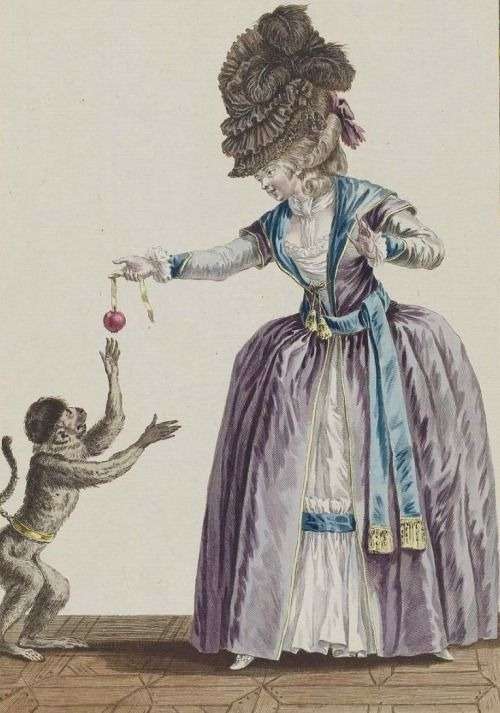Robe à la Levantine
Despite its name, the robe à la Levantine is not a gown in itself like a robe à la Française or à l'Anglaise. Instead, it is a sleeveless - or short-sleeved - robe which was worn over a usually gown with long sleeves which would pass through the sleeves of the Levantine. Compared to the very tight-fitted gowns usually worn by French aristocrats the robe à la Levantine was loose and was fitted at the back with somewhat loose pleating. Typically, it would be hemmed with fur, particularly ermine.
The robe à la Levantine was amongst the styles which became popular with the trend for "turquerie" or Turkish fashions. According to the Galerie des Modes et Costumes of 1779, the robe à la Levantine was the invention of Sarrazier who served as a costumier to the Princes of the Blood.
 |
| The example given by the 1779 edition of the Galerie des Modes |
It is easy to mistake the robe à la Levantine for a robe à la Reine - the latter is the name of a loose-fitting robe worn by Marie Antoinette during her first pregnancy. The lack of tightness around the waist made it a far more comfortable alternative to the rigid whalebone-supported court gowns; it is therefore not surprising that many women at court were pleased to adopt this new, exotic trend. While few ladies would venture beyond their own threshold, it suited just fine for a quiet day at home.
As the gown opened in the front, it became necessary to have something to fasten it with. Usually, this was done with a simple pin but a brooch might serve as well.
Robe à la Lévite
 |
| Robe à la Lévite - note the belt and the somewhat loose-fitted waist |
Another aspect which connected the Levantine with the Lévite was the sheer comfort. As the gown was not meant to be worn with a stiff corset, it became far more preferable. Initially, the gown was ankle-length but it eventually developed a train. Unlike the Levantine, the Lévite had full sleeves extending down to the wrists but were not nearly as snug as the usual court gowns.
 |
| Se how the bodice is held together |

No comments:
Post a Comment